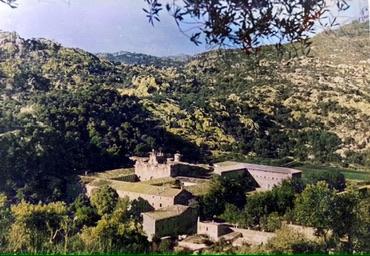Why is the Valldemossa monastery considered an important site for understanding Mallorca's artistic past?
Similar Topics
valldemossa monastery
mallorca artistic past
gothic architecture mallorca
renaissance architecture
chopin valldemossa
mallorca cultural heritage
religious artifacts mallorca
mallorca art museum
The Valldemossa monastery holds a significant place in understanding Mallorca's artistic past due to its rich historical and cultural legacy. Founded in the early 14th century by the Carthusian order, this monastery is a splendid example of Gothic and Renaissance architectural styles, reflecting the island’s medieval religious and artistic heritage. The structure’s ornate chapels, cloisters, and frescoes provide valuable insight into the craftsmanship and aesthetic preferences of Mallorca during the Middle Ages. Its preservation allows visitors to explore the artistic techniques and materials used by local artisans within a religious context, offering a tangible connection to the past.
Beyond its architectural and artistic value, the monastery is also renowned for its association with notable historical figures who have contributed to Mallorca’s cultural narrative. The French composer Frédéric Chopin and writer George Sand famously stayed in the Valldemossa monastery during the winter of 1838-1839. Their presence brought international attention to the site and inspired works of art, literature, and music that form an intrinsic part of Mallorca’s artistic identity. The rooms associated with Chopin and Sand offer a glimpse into the creative atmosphere that influenced their work, enhancing the monastery's role as a cultural and artistic landmark.
Moreover, the Valldemossa monastery’s museum houses numerous religious artifacts, manuscripts, and artworks collected over centuries, playing a crucial role in preserving and showcasing Mallorca’s artistic heritage. These collections include exquisite examples of religious iconography, traditional Mallorcan pottery, and intricate woodwork, all of which illustrate the island’s evolving artistic traditions. For scholars and art enthusiasts alike, the monastery serves as an essential resource to study the synthesis of local and external influences that have shaped Mallorca’s art scene. In sum, the Valldemossa monastery is not only a place of spiritual significance but a living repository of Mallorca’s artistic and cultural history.
Beyond its architectural and artistic value, the monastery is also renowned for its association with notable historical figures who have contributed to Mallorca’s cultural narrative. The French composer Frédéric Chopin and writer George Sand famously stayed in the Valldemossa monastery during the winter of 1838-1839. Their presence brought international attention to the site and inspired works of art, literature, and music that form an intrinsic part of Mallorca’s artistic identity. The rooms associated with Chopin and Sand offer a glimpse into the creative atmosphere that influenced their work, enhancing the monastery's role as a cultural and artistic landmark.
Moreover, the Valldemossa monastery’s museum houses numerous religious artifacts, manuscripts, and artworks collected over centuries, playing a crucial role in preserving and showcasing Mallorca’s artistic heritage. These collections include exquisite examples of religious iconography, traditional Mallorcan pottery, and intricate woodwork, all of which illustrate the island’s evolving artistic traditions. For scholars and art enthusiasts alike, the monastery serves as an essential resource to study the synthesis of local and external influences that have shaped Mallorca’s art scene. In sum, the Valldemossa monastery is not only a place of spiritual significance but a living repository of Mallorca’s artistic and cultural history.


